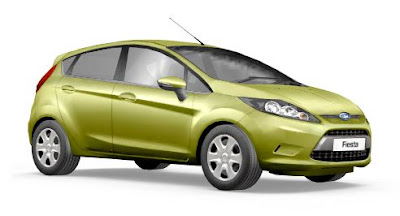Used Duratorq TDCI Cars Models New Ford Fiesta 1.25 Duratec Car Review Parts 1
Ford Fiesta Duratorq TDCI Cars
Review Ford Fiesta Duratorq TDCI Cars Parts 1
Can the entry-level Ford Fiestas still impress? Steve Walker checks out the 1.25-litre range.
Superminis these days aren’t the small fry shopping hatches they once were. Motorists expect a more rounded product when their spending their money in this popular sector of the market and current superminis have grown to accommodate them. Tipping the scales at well over 1,000kg and at around four meters in length, we’re talking about substantial bits of metalwork but that raises questions about the engines charged with powering them. Can a supermini still get away with less than 1.3-litres? Ford thinks so, fitting a 1.25-litre unit to its Ford Fiesta.
Most superminis do campaign with a 1.2 or even a 1.1-litre unit as their entry-level petrol engine, so Ford Fiesta is by no means unusual in offering its long serving 1.25-litre powerplant with the Ford Fiesta. How such diminutive engines cope with the varied roles that modern superminis are designed to perform is less clear. The suspicion is always there that the key purpose of such units is to provide an eye-catching opening price for a model range. This will sucker the public in so they can be up-sold to something a little more salubrious and profitable for the manufacturer. So is the Ford Fiesta 1.25 merely a carrot luring us into the clutches of Ford Fiesta ’s sharp suited sales personnel or can we put it down as a worthwhile model in its own right?
Ford Fiesta Duratorq TDCI not a new engine. It was fitted to the fourth generation Ford Fiesta and the fifth, where it was actually replaced by an inferior 1.3-litre unit then reintroduced later on. It’s back in this sixth generation Ford Fiesta and now there are a pair of power options for the punters to mull over. The 59bhp entry-level option is predictably lacking in the performance department with the 0-60mph sprint taking a tiresome 16.9 seconds. The 81bhp alternative has more zip about it with a 13.3s sprint but it’s still lacking a bit in the muscle needed to propel a Ford Fiesta of the Ford Fiesta’s size around town in a nippy fashion. Maximum torque is 84Nm at 4,200rpm, whereas the less powerful option produces its 80Nm at a slightly more accessible 3,600rpm.
"…the 1.25 models should be perfectly adequate for urban motoring"
Superminis these days aren’t the small fry shopping hatches they once were. Motorists expect a more rounded product when their spending their money in this popular sector of the market and current superminis have grown to accommodate them. Tipping the scales at well over 1,000kg and at around four meters in length, we’re talking about substantial bits of metalwork but that raises questions about the engines charged with powering them. Can a supermini still get away with less than 1.3-litres? Ford thinks so, fitting a 1.25-litre unit to its Ford Fiesta.
Most superminis do campaign with a 1.2 or even a 1.1-litre unit as their entry-level petrol engine, so Ford Fiesta is by no means unusual in offering its long serving 1.25-litre powerplant with the Ford Fiesta. How such diminutive engines cope with the varied roles that modern superminis are designed to perform is less clear. The suspicion is always there that the key purpose of such units is to provide an eye-catching opening price for a model range. This will sucker the public in so they can be up-sold to something a little more salubrious and profitable for the manufacturer. So is the Ford Fiesta 1.25 merely a carrot luring us into the clutches of Ford Fiesta ’s sharp suited sales personnel or can we put it down as a worthwhile model in its own right?
Ford Fiesta Duratorq TDCI not a new engine. It was fitted to the fourth generation Ford Fiesta and the fifth, where it was actually replaced by an inferior 1.3-litre unit then reintroduced later on. It’s back in this sixth generation Ford Fiesta and now there are a pair of power options for the punters to mull over. The 59bhp entry-level option is predictably lacking in the performance department with the 0-60mph sprint taking a tiresome 16.9 seconds. The 81bhp alternative has more zip about it with a 13.3s sprint but it’s still lacking a bit in the muscle needed to propel a Ford Fiesta of the Ford Fiesta’s size around town in a nippy fashion. Maximum torque is 84Nm at 4,200rpm, whereas the less powerful option produces its 80Nm at a slightly more accessible 3,600rpm.
"…the 1.25 models should be perfectly adequate for urban motoring"






































0 ความคิดเห็น:
Post a Comment